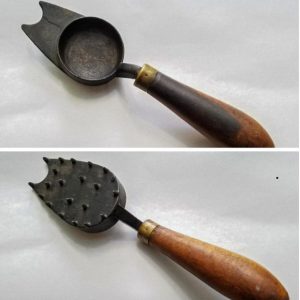The glass cutter, though often overlooked, is an essential tool that has played a significant role in the evolution of glassmaking. Dating back to the early 19th century, this tool revolutionized the industry by providing precise and controlled cuts, something that was difficult to achieve with previous methods. Even with advancements in technology, the classic glass cutter remains a favorite among artisans, glaziers, and enthusiasts for its simplicity and efficiency. Let’s explore the rich history, innovative design, and enduring legacy of this indispensable tool.

The Historical Development of the Glass Cutter
Before the invention of the glass cutter, glassmakers relied on diamonds or other hard metals to mark and cut glass. This method was not only challenging but also prone to errors, often resulting in uneven cuts and a high risk of breakage. Glassmaking was an art that required precision, and the lack of effective tools made it difficult to achieve consistent results.
In the early 19th century, the glass industry experienced a transformative change with the introduction of the glass cutter. This tool, equipped with a hardened steel wheel, allowed glassmakers to score the glass surface with precision, creating a controlled fracture that led to cleaner breaks. This innovation significantly improved the quality of glass products and made the cutting process more accessible to a wider range of applications, from industrial production to intricate artistic work.
Revolutionary Design: The Hardened Steel Wheel
The design of the first patented glass cutter, introduced in the mid-1800s, was revolutionary. The key feature of this tool was the hardened steel wheel, which could create a fine, precise score on the glass surface. This wheel replaced the previously used diamond tips, offering a more durable and cost-effective solution. The steel wheel’s ability to maintain its sharpness over time made it a preferred choice for professionals and hobbyists alike.

The glass cutter’s ergonomic handle and precision wheel allowed for delicate and intricate cuts, making it indispensable for artisans and glaziers. Its simplicity of design, combined with its effectiveness, ensured that the glass cutter would become a staple in workshops around the world. This tool not only improved the efficiency of glass cutting but also allowed for greater creativity in glasswork, as artisans could now make more complex and detailed cuts with confidence.
How to Use a Glass Cutter: A Step-by-Step Guide
The primary function of a glass cutter is to score the surface of the glass, creating a line along which the glass can be cleanly broken. Here’s a step-by-step guide on how to use this classic tool effectively:

- Preparation: Begin by cleaning the glass surface to remove any dust or debris. Place the glass on a flat, stable surface to ensure accuracy during the cutting process.
- Marking: Use a ruler and a felt-tip pen or pencil to mark the desired cutting line. This will serve as a guide for the glass cutter.
- Scoring: Hold the glass cutter firmly and apply consistent pressure as you pull the cutting wheel along the marked line. The goal is to create a clean, continuous score without pressing too hard, which could cause the glass to crack.
- Breaking: Once the glass is scored, place the marked line on the edge of the work surface or use a specialized breaking tool. Apply light, even pressure to snap the glass along the score line.
By following these steps, you can achieve precise cuts, making the glass cutter an invaluable tool for both professional and DIY projects.
The Legacy of the Glass Cutter: A Symbol of Craftsmanship
The classic glass cutter is more than just a hand tool; it is a symbol of craftsmanship and creativity. Despite the introduction of automated cutting machines and advanced glass cutting technologies, the manual glass cutter remains a cherished tool for its simplicity, precision, and control. It continues to play a vital role in the work of stained glass artists, glaziers, and DIY enthusiasts.

Collectors and history buffs often seek out vintage glass cutters, not only for their functionality but also for their aesthetic appeal and historical significance. Many of these vintage tools feature wooden handles and brass fittings, reflecting the craftsmanship of a bygone era. These tools are prized not only as functional items but also as artifacts that represent the evolution of glassmaking tools.
The principles behind the classic glass cutter have influenced modern glass cutting tools and techniques. However, the original design has remained largely unchanged, a testament to its enduring practicality and the lasting impact it has had on the glassmaking industry.
Conclusion: A Tool That Bridges the Past and Present
The classic glass cutter is a remarkable example of how a simple tool can have a profound impact on an industry. Its introduction revolutionized glassmaking, making the process of cutting glass more precise and accessible. Over a century later, the glass cutter remains a beloved tool, treasured for its ability to deliver precise cuts and its connection to the rich history of craftsmanship.

As technology continues to advance, the glass cutter serves as a reminder of the importance of manual skills and the art of handcrafting. It bridges the past and present, preserving the techniques of traditional glassmaking while continuing to be a useful tool in modern times. Whether you’re a professional glazier, an artisan, or a DIY enthusiast, the glass cutter is a tool that embodies the enduring legacy of craftsmanship.


